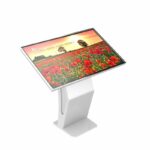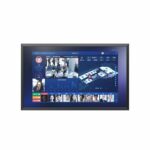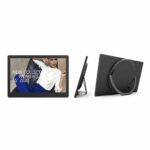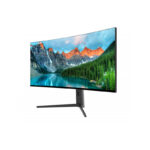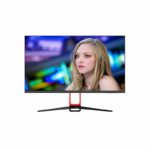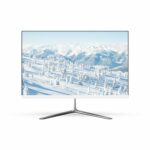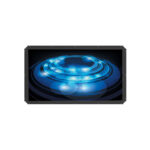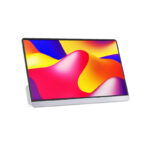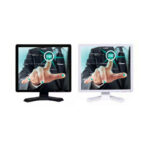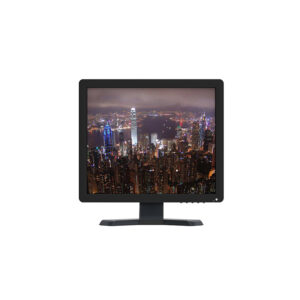The best monitor supplier in China tells you how the LCD monitor is composed?
A liquid crystal monitor is a monitor that uses liquid crystal as a material. Liquid crystals are organic compounds between solid and liquid. It becomes a clear liquid when heated, and a crystalline cloudy solid when cooled. Under the action of the electric field, the liquid crystal molecules will change in arrangement, thus affecting the change of the light passing through it. In this way, people finally control the light and dark changes of light by controlling the electric field, so as to achieve the purpose of displaying images.
According to the arrangement of liquid crystal molecules, common LCD monitor are divided into:TN-LCD, STN-LCD, DSTN-LCD with narrow viewing angle; IPS, VA, FFS, etc. with wide viewing angle.
The TN type is the mode adopted by the most mainstream LCD monitors on the market, and is widely used in entry-level and mid-range panels.
At present, the common ones are not outstanding in performance indicators, and there are natural chronic diseases in the viewing angle. The TN panels seen on the market are all improved TN+film, and film is a compensation film, which is used to make up for the lack of viewing angle of the TN panel. To say that the TN panel is better than the previous two panels, it is because of its output. The number of gray levels is large, and the deflection speed of LCD molecules is fast, which makes it easy to improve its response time. Currently, liquid crystal products below 8ms on the market all use TN panels. In general, TN panel is a product with obvious advantages and disadvantages. The price is cheap, and the response time can meet the requirements of the game, which makes it an advantage. The viewing angle is not ideal and the color performance is unreal, which are obvious disadvantages.
DSTN scans the twisted nematic LCD monitor by double scanning, so as to achieve the display purpose. DSTN is developed from super twisted nematic display (STN). Since DSTN adopts double scanning technology, the display effect is greatly improved compared to STN.
The wide viewing angle mode is mostly used in LCD TVs. Take IPS as an example, it is a panel technology launched by Hitachi in 2001, and it is also commonly known as “Super TFT”. From a technical point of view, the liquid crystal molecules of traditional LCD monitor are generally switched between vertical-parallel states. MVA and PVA have improved it into a vertical-bidirectional tilt switching method. The biggest difference between IPS technology and the above technologies is that no matter the In which state the liquid crystal molecules are always parallel to the screen, but the rotation direction of the molecules in the power-on/normal state is different – note that the rotation of the MVA and PVA liquid crystal molecules belongs to the spatial rotation (Z axis), while the IPS liquid crystal molecules The rotation of is an in-plane rotation (X-Y axis). In order to cooperate with this structure, IPS requires the improvement of the electrodes, and the electrodes are on the same side to form a plane electric field. The problems brought about by such a design are twofold. On the one hand, the viewing angle problem has been solved. On the other hand, due to the marginal electric field effect, the liquid crystal light efficiency (light transmittance) is low, so the IPS also has the disadvantage of a slow response time. 16.7M colors, 178-degree viewing angle and 16ms response time represent the highest level of IPS LCD monitor today.
From the driving method of LCD, the most common one is TFT (Thin Film Transistor) type driving. It achieves independent and precise control of each pixel by means of active switches, so it can achieve a finer display effect than the previous passive drive (commonly known as pseudo-color).
Therefore, at present, most LCD monitor, LCD TVs and some mobile phones are driven by TFT. LCD monitor mostly use the TN mode with a narrow viewing angle, and LCD TVmostly use the IPS mode with a wide viewing angle. They are commonly known as TFT-LCDs.
The composition of TFT-LCD is mainly composed of fluorescent tube (or LED Light Bar), light guide plate, polarizer, filter plate, glass substrate, alignment film, liquid crystal material, thin mode transistor and so on. First, LCD monitor must use a backlight to project light sources that pass through a polarizer and then through the liquid crystal. At this time, the arrangement of the liquid crystal molecules will change the polarization angle of the light propagating through the liquid crystal, and then the light must pass through the color filter film and another polarizer in front. Therefore, as long as we change the voltage value applied to the liquid crystal, we can control the final light intensity and color, so that the color combination with different tones can be changed on the liquid crystal panel.

